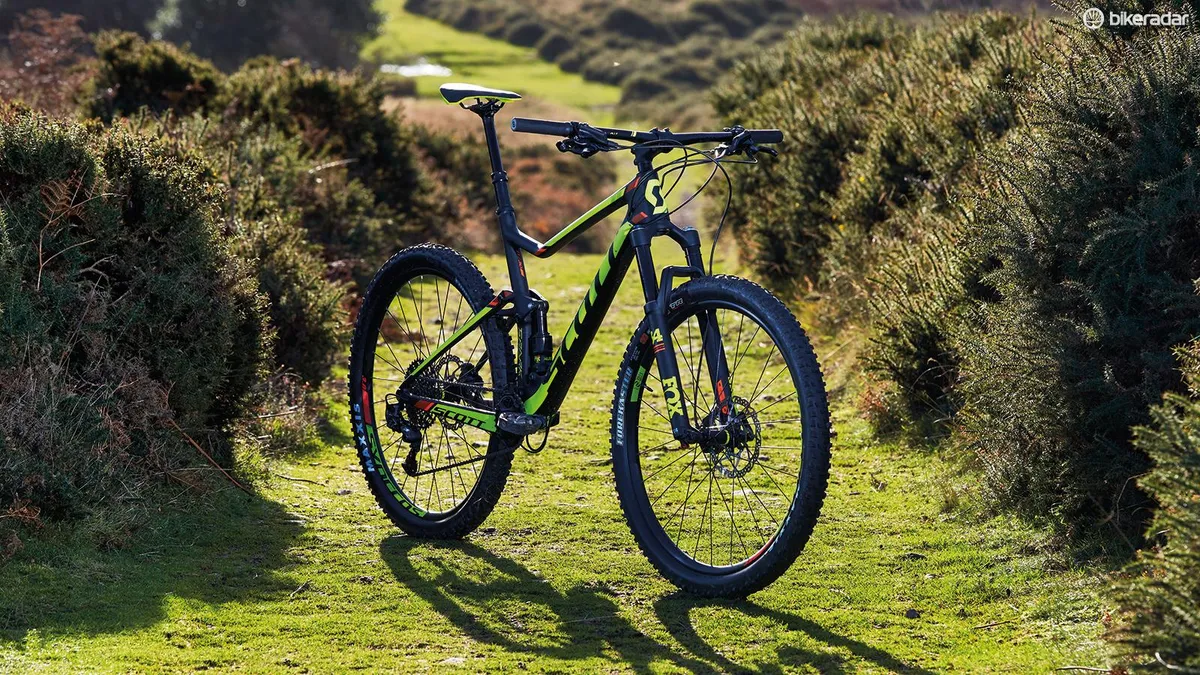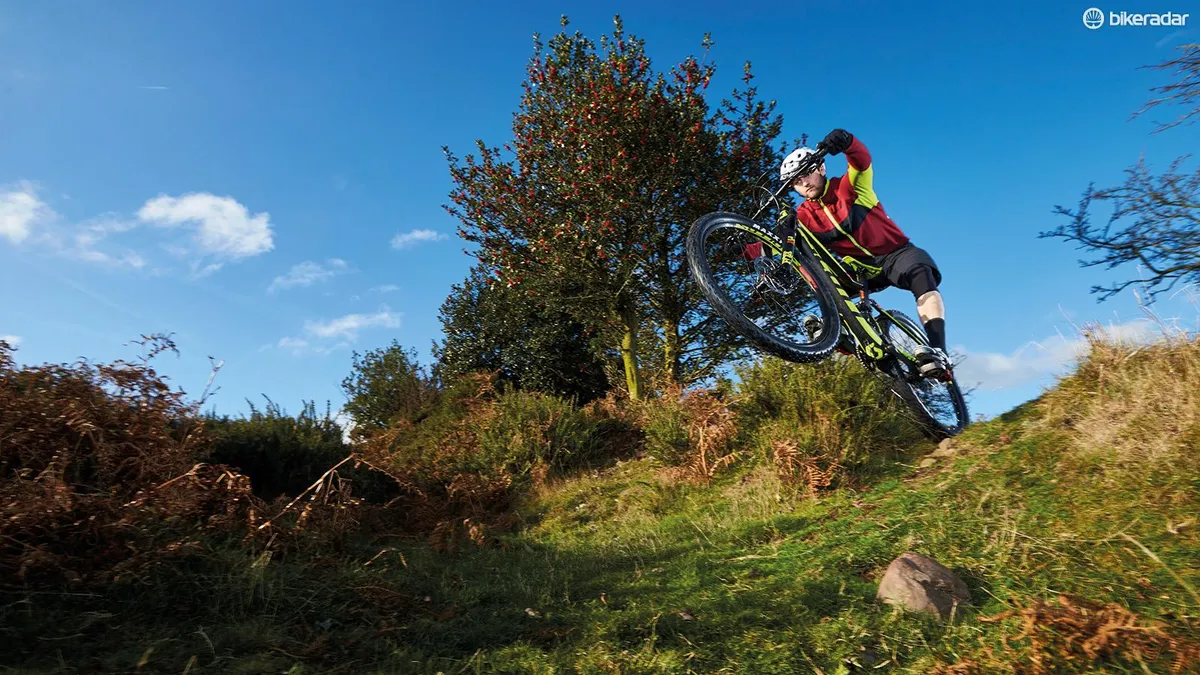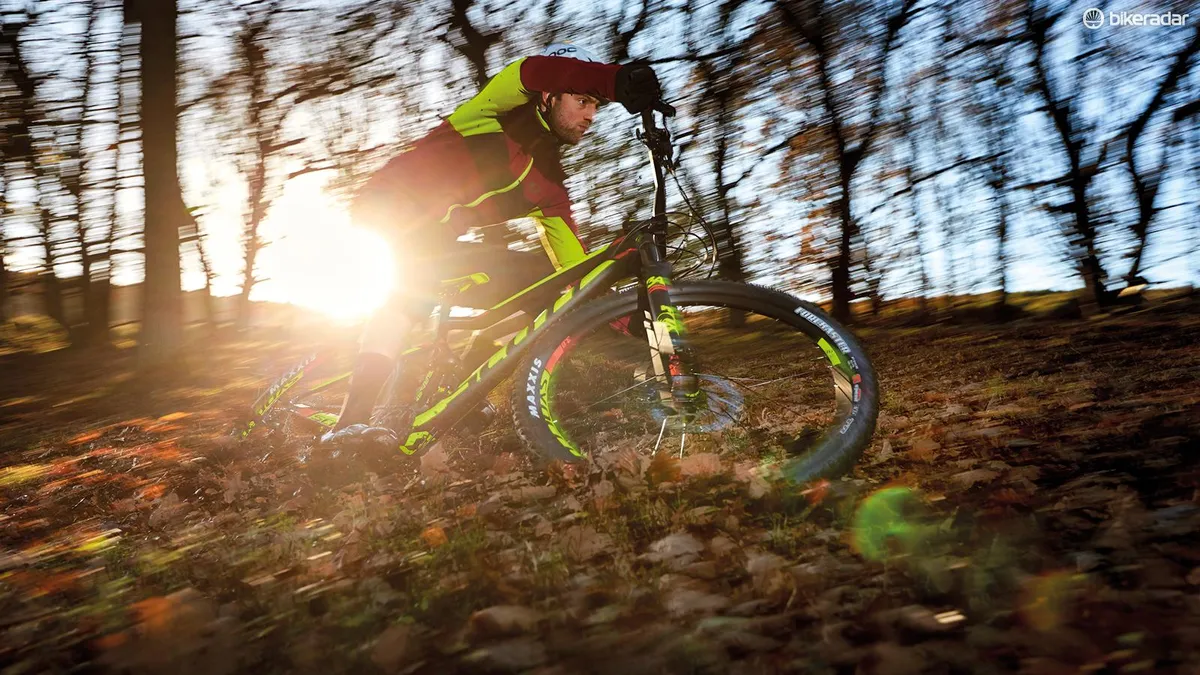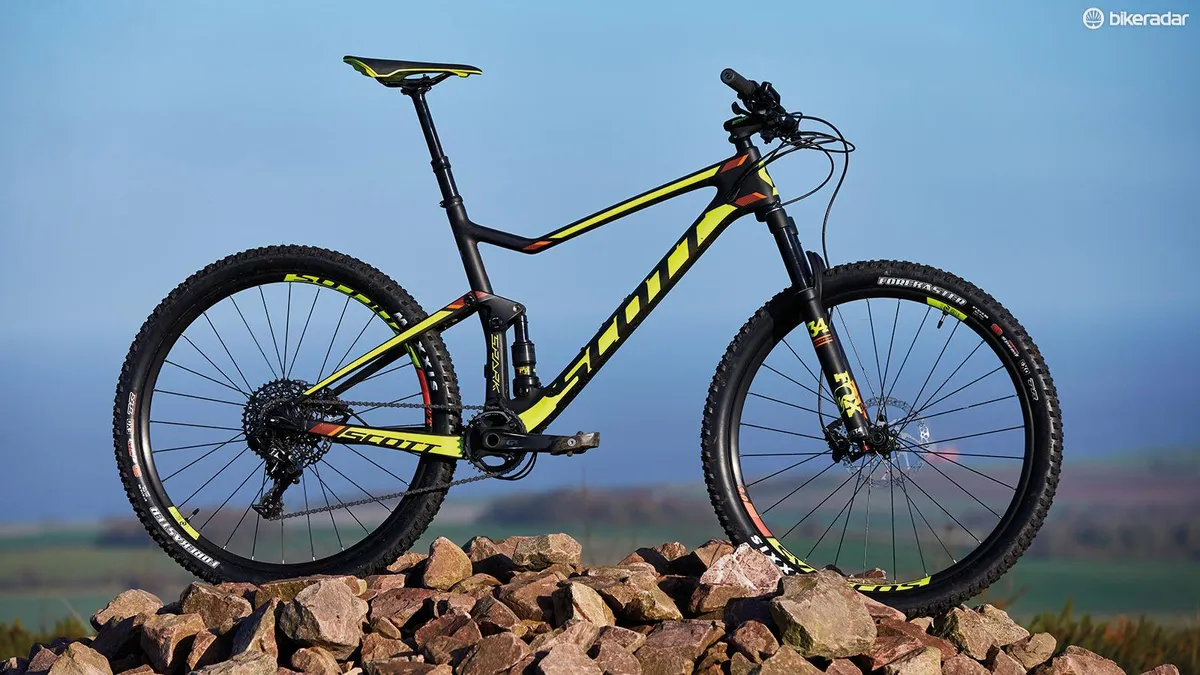Scott’s 120mm-travel 730/930 double act combines trail handling with remote control suspension sharpening to deliver flat-out speed and full-gas fun.
The big news with the 730 (and its 930 29er brother) is the move up to a carbon fibre mainframe. It’s a cost-conscious HMF (rather than HMX) lay-up with an alloy back end, but a significant upgrade.

Broad box-section tubes up front and deep, dropped chainstays transfer power straight to the Boost back end. Practical and aesthetic detailing is excellent too, with the small hollow-back rocker linkage butting cleanly onto the seatstays and aligning physically and graphically with the top tube.
The single bottle mount has two positions on the down tube and the internal cable routing is clean, quiet and knee/paint friendly, which leaves only the press-fit bottom bracket to worry about in the long term.
The fork uses 34mm rather than 32mm stanchions and you get a 60mm stem and 740mm bar. Also, it has an (internally routed) dropper post and there's a SRAM GX 1x11 transmission and Shimano Deore M506 brakes with 180mm rotors.
While they have an all-conditions tread, the Maxxis Forekaster tyres are the fastest-rolling Maxx Speed triple-compound version. My test bike is the 650b model, but I’ve also spent a lot of time on the Spark 900 29er, essentially the same bike, just with a SRAM Eagle transmission and other small tweaks.
Scott Spark 730 ride

Whichever wheel size you choose, it’s the geometry and shock behaviour of the Spark that stand out. The shorter stem and 67-degree head angle give a much lighter steering action on a far more stable and self-correcting base template than the other bikes. It lets you blast into really rough terrain with a ton of confidence, but still make rapid, accurate corrections to catch slipping traction or tighten lines if the tyres still have some grip (which they often do) — the Scott is slack even for a 120mm bike.
Radical geometry isn’t new for Scott’s race bikes, but the big news this year is that the suspension kinematics finally let them really make the most of it. Even with the extra dual-travel complications packed into its short stroke, the unique Fox Nude shock gives a great mix of small-bump sensitivity for increased traction and fatigue reduction, efficient pedalling/cornering support and progressive big-hit absorption.

Add the agile handling and dropper post, and it’s a bike that loves to hop and pop on red and blue-grade trails but can also trade blows with black runs or ugly off-piste trouble and come out laughing. In fact, you’ll hit the limits of the 34 fork earlier than the back end when you’re properly hauling.
The Scott delivers power so seamlessly and efficiently, even over properly ragged terrain, that I found myself unloading max watts through it at every opportunity just because it felt so good.
The suspension also offsets the slower roll of the smaller wheels on rougher surfaces, while, from experience, the 29er Spark amps up the advantage even more. The ability to tighten up or fully lock out the suspension from the handlebar is a gift when it comes to gapping anything with a similar trail ability too.

